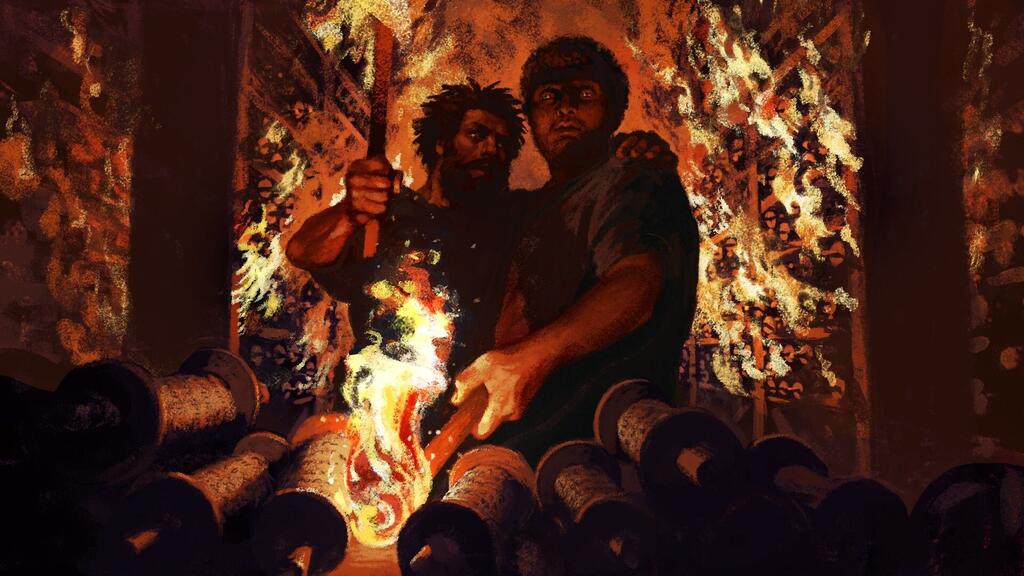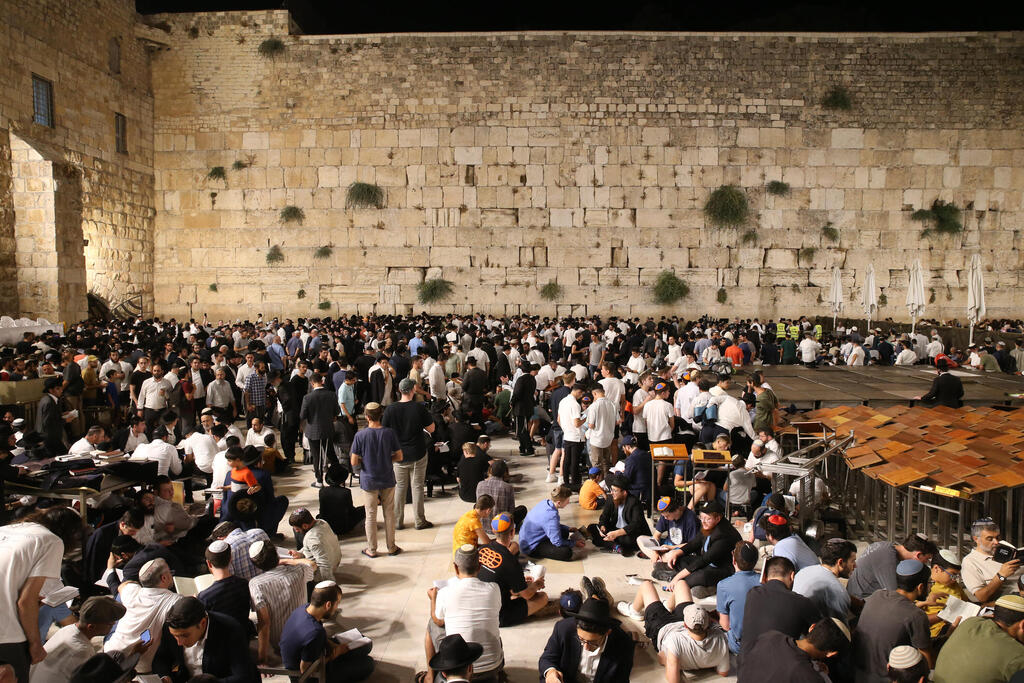Every year, as Tisha B’Av approaches, there’s almost a national pastime in Israel of criticizing those who rebelled against the Romans near the end of the Second Temple period. “People imagine a group of fools who rebelled without thinking,” says military historian Dr. Yosef Gil (Yagil) Henkin. “But rebellions don’t erupt after a grand strategic calculation. They happen because something ignites them. It’s like you’ve got a pile of dry straw, and all it takes is one spark to set it ablaze—it’s not necessarily the foolishness of the rebels.”
So, what sparked the Great Revolt that led to the destruction of the Second Temple?
“The Roman Empire’s economic model involved appointing governors who essentially bought their positions in exchange for the right to collect as much tax as they wanted for their personal coffers. At that time, the last governors in Judea were especially corrupt, causing widespread resentment and even mass killings of Jews, such as the massacre in Caesarea, which also fueled the rebellion.”
Did the Jewish Revolt Against the Romans Stand a Chance?
“Importantly, we weren’t the only ones to rebel against the Romans,” Henkin emphasizes. “No one asks why Spartacus led the Gladiator Revolt in 71–73 BCE or questions other failed rebellions against the Roman Empire. History has also seen empires that were defeated and retreated—the Romans in the Teutoburg Forest in 9 CE, or the British failure in Kabul in 1845, where reportedly only one man survived.”
So, did the Jewish revolt have any chance of success?
“You could argue yes, as the timing wasn’t bad—the Romans were preoccupied with internal conflicts. Nero’s later years as emperor were unstable and are remembered as a reign of madness. After him came the Year of the Four Emperors in 69 CE, during which rulers in Rome changed rapidly due to instability. It’s hard to know if Jewish leaders were aware of this, as they weren’t reading the ‘Rome Times,’ and information traveled slowly. But the Jewish rebels organized for defense and hoped to wear down the Romans until they gave up.”
The Roman Empire was relentless
This sounds reasonable, but there’s a problem, Henkin explains: “The defining characteristic of an empire is that it doesn’t give up. There’s a reason for the phrase ‘All roads lead to Rome.’ The Romans built a vast network of roads and could easily mobilize forces and supplies throughout the empire. Their economy and military organization allowed them to besiege Jerusalem for years and wait until they could conquer and destroy it.”
The Babylonian Talmud includes several stories that describe the period of the revolt, culminating in the destruction of the Second Temple in 70 CE. The most famous of these is the story of Kamsa and Bar Kamsa:
Jerusalem was destroyed because of Kamsa and Bar Kamsa. A man had a friend named Kamsa and an enemy named Bar Kamsa. He prepared a banquet and told his servant to bring Kamsa. The servant mistakenly brought Bar Kamsa. When the host saw Bar Kamsa sitting there, he said, “Since you are my enemy, what are you doing here? Get up and leave!” Bar Kamsa replied, “Since I’ve already come, let me stay, and I’ll pay for whatever I eat and drink.” The host refused. Bar Kamsa then offered, “I’ll pay for half the cost of the banquet.” The host still refused. Finally, Bar Kamsa said, “I’ll pay for the entire banquet.” The host still refused and physically removed him from the banquet.
Bar Kamsa, humiliated, decided to take revenge. “Since the sages were present at the banquet and did not protest, they must have agreed with my humiliation,” he thought. He went to the Roman emperor and claimed, “The Jews have rebelled against you.” The emperor asked, “Who says so?” Bar Kamsa responded, “Send them a sacrifice and see if they offer it.” The emperor sent a fine calf as a sacrifice. On the way, Bar Kamsa intentionally blemished the calf in a way that disqualified it according to Jewish law but not Roman standards.
The sages debated whether to offer the sacrifice for the sake of peace with the government. Rabbi Zechariah ben Abkilus objected, saying, “People will think blemished animals may be offered on the altar.” The sages then considered killing Bar Kamsa to prevent him from reporting back to the emperor. Again, Zechariah ben Abkilus objected, saying, “People will say that anyone who blemishes an offering is executed.” Rabbi Yochanan concluded, “The humility (or indecisiveness) of Rabbi Zechariah ben Abkilus destroyed our Temple, burned our sanctuary, and exiled us from our land.”
A society in decline
“The collection of destruction stories portrays a society that, in my opinion, was doomed to fall to the Romans,” Henkin explains. But can we really blame this for the destruction of the Temple rather than the military defeat? “It’s important to clarify that most of the Talmudic stories, written hundreds of years later by sages in Babylon, don’t discuss the military reasons for the destruction. Instead, they address the societal breakdown that led to the fall of Jerusalem, the Temple Mount, and Beitar. They describe a moment in time when internal divisions paralyzed the people and their leaders, preventing any chance of victory or negotiation with the Romans to avoid rebellion.”
Henkin points out that one standout story is Rabbi Yochanan’s confrontation with the emperor, where he famously requested, “Give me Yavne and its sages.” This request ensured the preservation of Jewish teachings and leadership for future generations. However, Henkin notes that even among the zealots, fear of public perception played a significant role. “The zealots debated whether to stab Rabbi Yochanan’s body to confirm his death when he pretended to be dead to leave Jerusalem. Ultimately, they decided against it, saying, ‘People will say we stabbed our rabbi.’ This concern over ‘what people will say’ drove not just Rabbi Zechariah but also the zealots.”
Lessons for today
Dr. Henkin, a research fellow at the Jerusalem Institute for Strategy and Security and a lecturer in strategy and security studies, reflects on the lessons that can be drawn from the destruction of the Second Temple for modern decision-making. “First, I say, ‘Blessed am I for not being a decision-maker.’ People think they could make better decisions than those in power, but it’s incredibly challenging and a difficult responsibility.”
Nevertheless, Henkin shares some conclusions. “One lesson is to remember Rabbi Zechariah ben Abkilus, whose rigid interpretation of the law prevented flexibility in the face of existential threats. Leaders must always ask themselves if their conclusions are correct and remain cautious about drawing parallels between different situations. Reality is constantly changing, and leaders must adapt.”
Get the Ynetnews app on your smartphone: Google Play: https://bit.ly/4eJ37pE | Apple App Store: https://bit.ly/3ZL7iNv
Henkin also highlights the views of historian Edward Luttwak, a leading scholar of military strategy, who emphasized the importance of internal legitimacy. “Luttwak argued that internal unity is far more important than global public opinion. Leaders should prioritize actions that unify rather than divide. During the Second Temple period, different groups viewed each other as greater enemies than the Romans attacking Jerusalem. This societal fragmentation and the burning of food supplies made it easier for the Romans to win.”
In conclusion, Henkin says, “In times of war, leaders must focus on what will unite the people enough to sustain support over the long term. You can’t fight solely in the name of ideals without the nation firmly behind you.”





